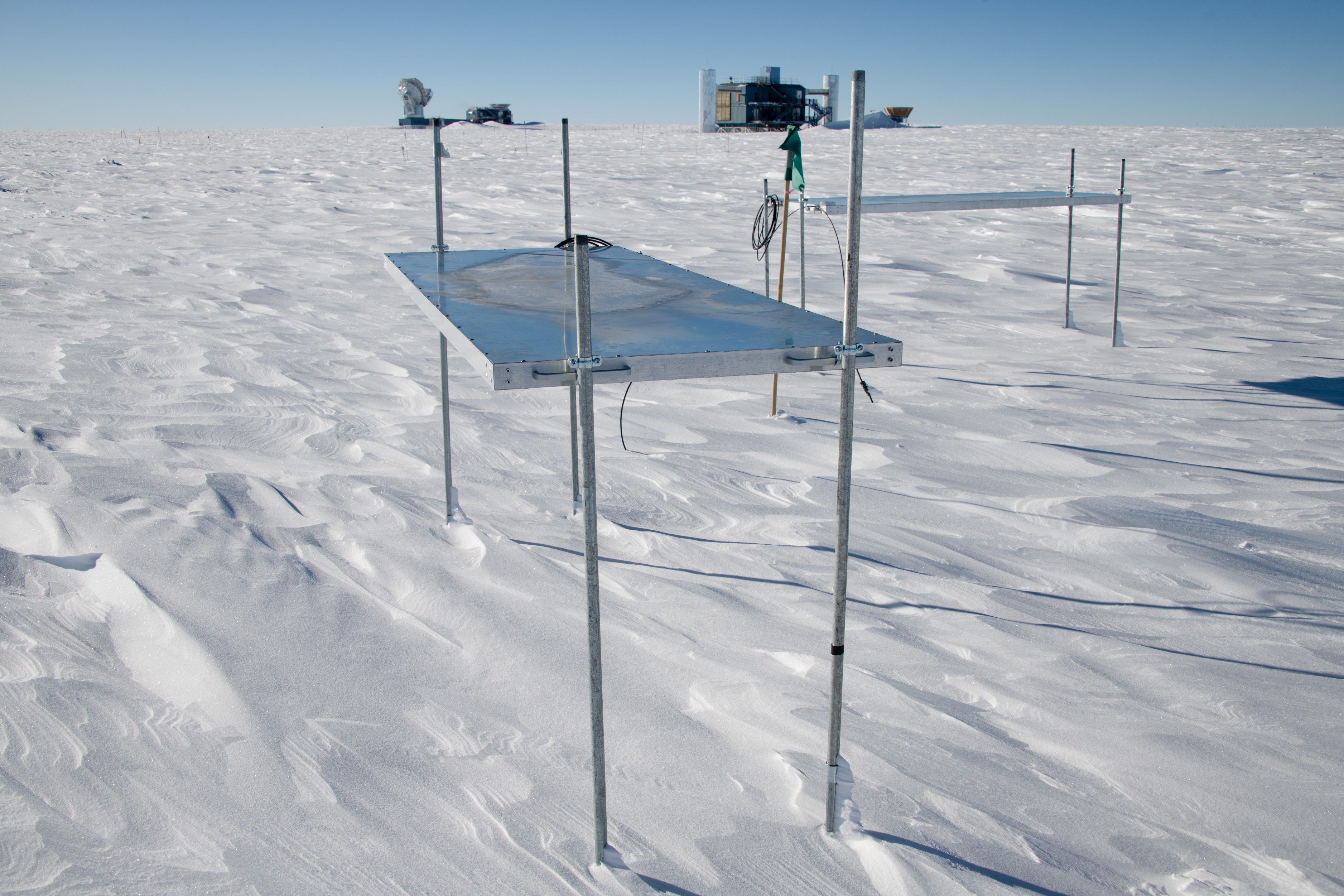
The next generation neutrino telescope, IceCube-Gen2, currently under development, will consist of three essential components: an array of c.10,000 optical sensors embedded within approximately eight cubic kilometers of ice for detecting neutrinos with energies of TeV and above, with a sensitivity five times greater than that of IceCube; a surface array with scintillation panels and radio antennas targeting air showers; and buried radio antennas distributed over an area of more than 400 square kilometers to significantly enhance the sensitivity of detecting neutrino sources beyond EeV.
Vagdhan Roy completed a fourth year undergraduate project investigating the potential for the proposed extended surface array to distinguish different types of cosmic ray events. Vagdhan developed a likelihood method based on the differing number o fmuons expected in the showers produced by different nuceli cosmic rays. Read about his research in his
project report


 The next generation neutrino telescope, IceCube-Gen2, currently under development, will consist of three essential components: an array of c.10,000 optical sensors embedded within approximately eight cubic kilometers of ice for detecting neutrinos with energies of TeV and above, with a sensitivity five times greater than that of IceCube; a surface array with scintillation panels and radio antennas targeting air showers; and buried radio antennas distributed over an area of more than 400 square kilometers to significantly enhance the sensitivity of detecting neutrino sources beyond EeV.
Vagdhan Roy completed a fourth year undergraduate project investigating the potential for the proposed extended surface array to distinguish different types of cosmic ray events. Vagdhan developed a likelihood method based on the differing number o fmuons expected in the showers produced by different nuceli cosmic rays. Read about his research in his
project report
The next generation neutrino telescope, IceCube-Gen2, currently under development, will consist of three essential components: an array of c.10,000 optical sensors embedded within approximately eight cubic kilometers of ice for detecting neutrinos with energies of TeV and above, with a sensitivity five times greater than that of IceCube; a surface array with scintillation panels and radio antennas targeting air showers; and buried radio antennas distributed over an area of more than 400 square kilometers to significantly enhance the sensitivity of detecting neutrino sources beyond EeV.
Vagdhan Roy completed a fourth year undergraduate project investigating the potential for the proposed extended surface array to distinguish different types of cosmic ray events. Vagdhan developed a likelihood method based on the differing number o fmuons expected in the showers produced by different nuceli cosmic rays. Read about his research in his
project report